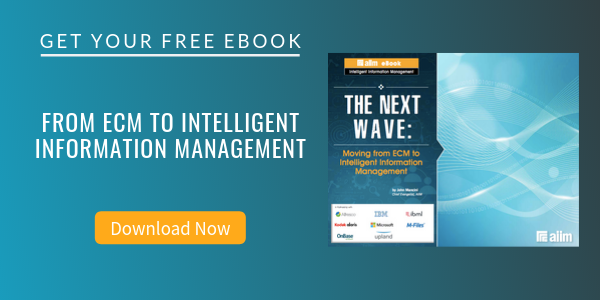
Records Vs. Non-Records
Electronic Records Management (ERM)
In another post this week, we took a look at the first step in the information lifecycle – information capture. We not only talked about the importance of capture, but we also talked about what you should be capturing and what you should avoid capturing.
Today, I’d like to dig a little deeper into that discussion and talk about how to distinguish between a record and a non-record. This is an important distinction to make when developing your Information Capture strategy.
If you are new to records management, some of the following may need a little getting used to, especially if you associate ‘anything that is in a file’ with the idea of ‘record’. In fact, many items that people keep, or file, are definitely not records.
Let's start out with some examples of what is typically considered a record and what is typically NOT considered a record.
Typical Examples of Records:
- Financial documents
- Policies and procedures
- Audit trails and logs
- Meeting agendas and minutes
- Significant memoranda
- Some internal e-mail
- Some drafts
- Paid invoices
- Executed contract
Typical Examples of Non-Records:
- Press cuttings
- Invitations
- Announcements of promotions
- Trade/industry publications
- Trivial memoranda
- Some internal e-mail
- Some drafts
- Templates
- Copies
In some cases, whether something is a record or not is pretty obvious: financial documents are, trade publications are not. But there are some kinds of information where it is less clear, such as memos, internal e-mail, and drafts. Here, the position is that some of these should be records – but then some should not be. Different organizations, under different regulatory regimes, and with different corporate policies, will have different ways to separate these.
The point of the distinction is that because records document business and legal obligations, they need to be managed more formally in order to preserve their evidentiary value. Generally, we can approach the determination of what to capture as a record by asking these key questions:
- Legal - Is there a specific legal or statutory requirement to keep a particular record? Is that for a particular period of time? These are very common in highly regulated industries.
- Fiscal - Do the records document financial obligations either to or from third parties?
- Operational - Are the records in question needed to complete other, non-financial transactions or activities?
- Historical - Are the records themselves of some particular historical value to the organization? These tend to be a very small percentage of corporate records, but a larger and sometimes significant percentage of governmental records holdings.
We should also note that the decision of whether to capture a record or not depends on its content and the value of that content to the organization, NOT on whether it is physical or electronic, or what file format it’s stored in. This is a fundamental tenet of records management: a transaction sent via email holds the same business value as the exact same transaction conducted through Word, or via fax, or by postal mail and the resulting record should be managed according to the same basic principles.

Identifying Vital Records
Another important records-related concept is that of the vital record. This refers to that subset of records that are critical to the organization’s mission or existence, or are required in the immediate aftermath of a disaster to begin the recovery process.
Loss of these records may cause irreparable harm to the organization. Because of that, vital records require exceptional protection, such as multiple redundant backups, offsite storage, or storage in fireproof vaults. They are also periodically reviewed to ensure they remain worthy of this exceptional (and more expensive) protection.
Pop Quiz Time
Now let’s test your knowledge with this sample exercise from AIIM’s training:
Which of these is most likely to need to be managed as a record?
- A signed and fully executed contract
- An email message noting this month’s employment anniversaries
- A project management template
- 9 of the 10 copies of the disaster recovery plan found on the network
The correct answer here is A, a signed and executed contract. B is an example of a trivial document. C is an example of a reference or template. D is an example of redundant copies.



